Aluminum alloys are among the top materials used for several applications in various industries today. Two of the most popular of these alloys are 6061 and 7075 aluminum.
While both alloys can do the job, understanding the 6061 vs. 7075 aluminum alloy differences in mechanical properties, composition, and costs will help you make the best choice.
Attributes like strength, conductivity, corrosion resistance, or a combination of these properties should guide your choice. This detailed comparison will guide you to choose the best alloy for your project.
An Overview of 6061 and 7075 Aluminum Alloys
Since we aim to give a detailed comparison of 6061 aluminum and 7075 aluminum, it is important to examine each aluminum grade. Here’s a brief overview.
6061 Aluminum Alloy Overview
6061 aluminum alloy is among the most versatile aluminum alloys for making metal custom parts. It is a heat-treatable allow which was originally referred to as “Alloy 61S.”
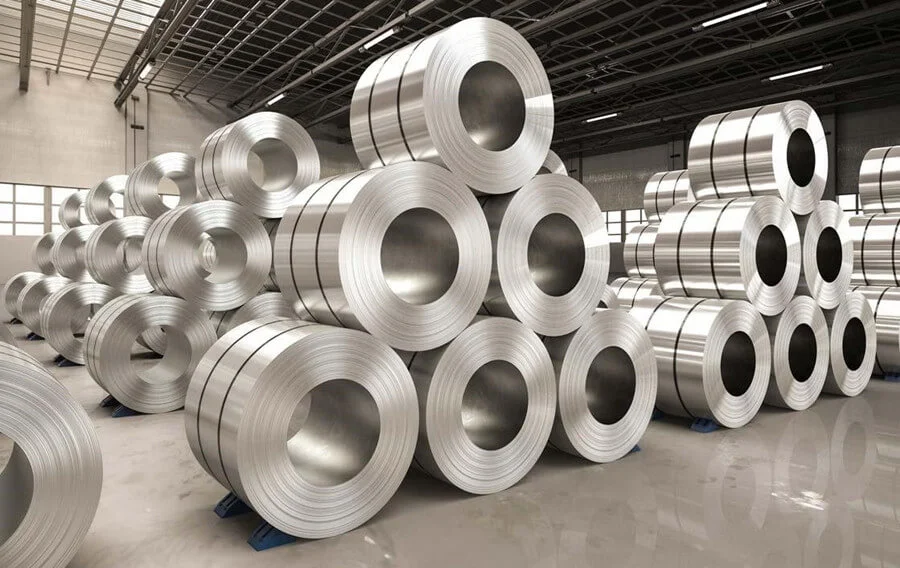
6061 aluminum is a member of the 6xxx aluminum series. Its elemental composition includes about 95 to 98 percent aluminum, 0.8 to 1.2 percent magnesium, and 0.4 to 0.8 percent silicon. Asides from these constituents, it also has some trace elements such as copper and chromium.
Many industries utilize 6061 aluminum because of its excellent mechanical properties and its corrosion resistance. The ease of fabrication this allows and its excellent formability make it a top choice for many applications.
7075 Aluminum Alloy Overview
7075 aluminum alloy is a member of the 7xxx aluminum series. It contains about 5.6 to 6.1 percent zinc, 2.1 to 2.5 percent magnesium, and 1.2 to 1.6 percent copper. The other metals that make up this alloy are silicon, chromium, manganese, iron, titanium, and more.
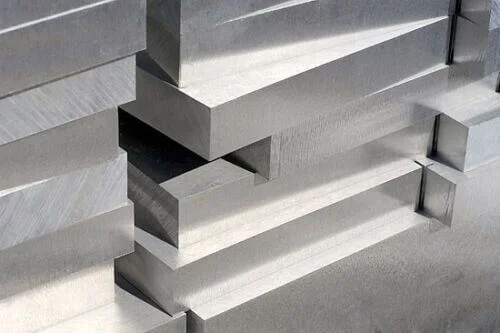
This aluminum grade boasts one of the highest strengths, with an optimum strength-to-weight ratio. Its extensive range of beneficial mechanical properties makes 7075 aluminum one of the most sought-after in the industry.
It has excellent resistance to weat and tear and good ductility. Thus, it is suitable for high-stress applications in structural parts.
6061 vs. 7075 Aluminum: Chemical Composition Differences
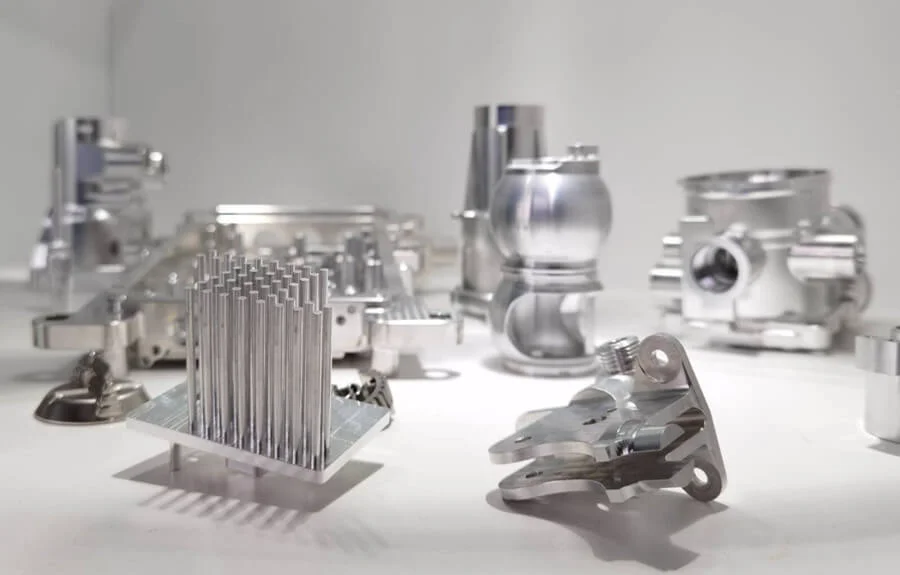
While 6061 aluminum and 7075 aluminum have similar components, the actual alloy composition of these components differ greatly in each of these aluminum grades. The following table summarizes the chemical composition of the 6061 vs. 7075 aluminum alloys.
| Element | 6061 Aluminum | 7075 Aluminum |
| Aluminum | 95.85 – 97.90 % | 86.90 – 91.40 % |
| Silicon | 0.40 – 0.80 % | 0.00 – 0.40 % |
| Zinc | 0.00 – 0.25 % | 5.6 – 6.10 % |
| Magnesium | 0.80 – 1.20 % | 2.1 – 2.50 % |
| Manganese (Mn) | 0.00 – 0.15 % | 0.00 – 0.30 % |
| Chromium | 0.04 – 0.35 % | 0.07 – 0.23 % |
| Copper | 0.15 – 0.40 % | 1.20 – 1.60 % |
| Iron (Fe) | 0.00 – 0.70 % | 0.00 – 0.50 % |
| Titanium (Ti) | 0.00 – 0.15 % | 0.00 – 0.2 % |
| Zirconium | – | 0.00 – 0.25 % |
| Residuals | 0.00 – 0.15 % | 0.00 – 0.15 % |
As you would see from the table above, there aren’t readily visible differences in the chemical composition of these alloys. However, 6061 aluminum has magnesium and silicon as its primary alloying elements.
On the other hand, the 7075 alloy has copper and zinc as the primary alloying elements. Since 6061 aluminum has lesser zinc constituent than 7075, it gets better workability and welding abilities. It also doesn’t have a comparable stress resistance and strength with 7075.
6061 vs. 7075 Aluminum: Mechanical Properties Differences
6061 and 7075 aluminum have various mechanical properties differences. The table below shows a comparison of the properties of these alloys.
| Material Properties | 6061 Aluminum Alloy | 7075 Aluminum Alloy |
| Yield strength | 276 MPa | 503 MPa |
| Modulus of Elasticity | 68.9 GPa | 71.7 GPa |
| Thermal conductivity | 167 W/m-K | 130 W/m-K |
| Melting point | 582 – 652°C | 477 – 635°C |
| Electrical Resistivity | 3.99 x 10-6 ohm-cm | 5.15 x10-6 ohm-cm |
| Hardness (Brinell) | 95 | 150 |
| Machinability | Good | Fair |
Yield Strength
The yield strength of an alloy specimen is the highest level of stress that would not permanently (or simply “elastically”) distort it. The yield strength of 7075 aluminum is higher than that of 6061 aluminum. As a result, 7075 aluminum can endure higher pressures and impacts without deforming.
The chemical heat treatment and composition of 7075 aluminum contribute to its yield strengt. 6061 aluminum, on the other hand, has a yield strength of 276MPa, indicating that it is not fully brittle.
Thermal Conductivity
A material’s thermal conductivity is a measurement of how well heat can be transported through it (or how effectively it can “conduct” heat). A high thermal conductivity (as found in these alloys) indicates that they conduct heat quickly and are not insulators.
Heat conductivity is generally good in aluminum alloys, but 6061 aluminum and 7075 aluminum conductivity differs. This is due to their chemical compositions as well as thermal treatment.

The 6061 aluminum has a slightly higher thermal conductivity than you will get for 7075. As a result, it’s a brilliant option for heat sinks and heat exchangers where heat dissipation is the key need.
Electrical Resistivity
The electrical resistivity of a material is a measurement by how well it resists the flow of electricity. It’s the reverse of electrical conductivity, which functions similarly to thermal conductivity but with electrical charge rather than heat.
Aluminum alloys 7075 and 6061 have low electrical resistivity, making them good electrical conductors. As a result, these alloys are suited for electrical applications.
However, the electrical resistivity of 6061 aluminum is lower than that of 7075 aluminum. Thus, it conducts electricity better than 7075 aluminum.
Corrosion Resistance
The 6061 aluminum has higher corrosion resistance than the 7075 aluminum. The rationale behind this is quite clear. The 7075 alloy has significantly more copper than the 6061 aluminum alloy. Corrosion is inevitable because copper interacts more with the environment.
Elasticity
Elasticity is a concept that helps you understand how resilient materials are and how resistant they are to distortion.. It’s also linked to the rigidity of the material.
Both 6061 and 7075 aluminum have similar elastic deformation reactions, suggesting that they behave similarly upon deformation.
Melting Point
The melting point of an alloy is the temperature at which it transforms from solid to liquid. Because of the wide range of elemental compositions and unique phase states, the melting points of metal alloys are described in ranges.
We compare the melting points of 7075 and 6061 to determine their temperature resistance. The melting point of 7075 aluminum is 477–635°C, a slightly lower temperature than that of 6061 aluminum, which is 582–652°C.
As a result, 6061 alloy is more resistant to increased temperatures than 7075. However, it’s worth noting that 7075 aluminum responds well to heat treatment. It also provides for significantly better element distribution within the metal.
Material Hardness
The response of a substance to local impact from a specified force is its hardness. It is the ability of materials to resist deformation by penetration, indentation, or other means. Hardness is an important metric because a harder material is more prone to brittle fracture. Hence, it is crucial to strike a balance between ductility and hardness.
Both aluminum alloys are tough enough to withstand fatigue stress without cracking or deformation. However, 7075 aluminum is tougher than 6061 aluminum.
Fabrication Considerations
When it comes to ease of manufacturing, 6061 aluminum beats 7075 aluminum alloy. This is owing to the 6061 alloy’s decreased hardness and tensile strength. It has a lower hardness, which makes the CNC machining procedures of this alloy easier.
A lower tensile strength also ensures better formability. Brazing, soldering, or adhesives can be used for joining the two materials. 6061 aluminum, however, is weldable, whereas 7075 aluminum is not. However, it may also require a post-weld heat-treatment process.
Machinability
A material’s machinability measures how well it responds to machining techniques such as cutting, milling, die-casting, and so on. When machining a certain alloy, the machinability is estimated using tooling speed, tool life, surface finish.
Both 6061 aluminum and 7075 aluminum can be machined without difficulty. However, if machinability is an issue, 6061 aluminum is better.
Anodizing Suitability
Aluminum anodizing is one of the most popular finishes for parts made with aluminum. The Aluminum Anodizers Council states that only the 5xxx and 6xxx aluminum alloy series are suitable for anodizing aaplications.

Thus, you will get the best anodizing result with 6061 aluminum than with 7075 aluminum. This is why you will find these alloys more in the construction and automotive industries. Their flexibility also enables use in several other anodizing applications.
6061 vs. 7075 Aluminum: Applications
Aluminum alloys generally have similar uses. The applications of 6061 and 7075 aluminum overlap is one way. Both of these alloys are important for making aerospace parts, automotive components, electronics, consumer products, and many more. However, they may differ in specific use areas.
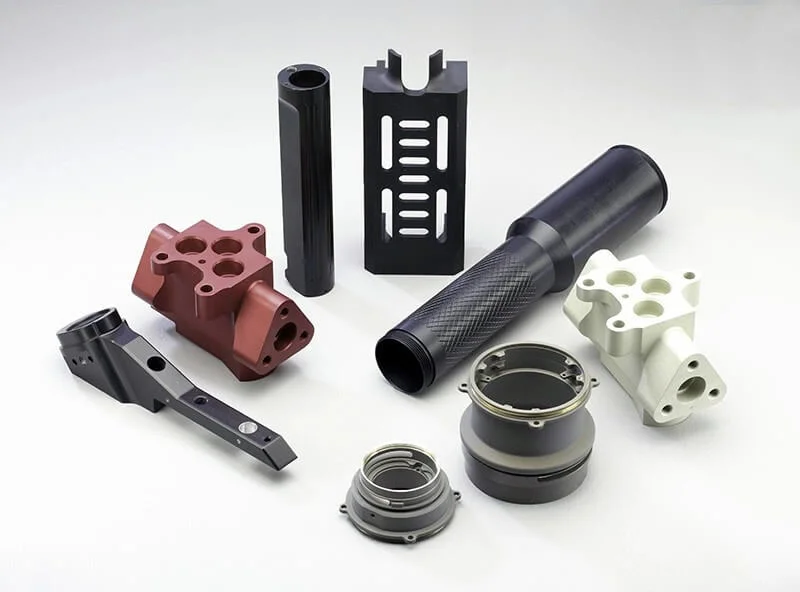
Specific 6061 Aluminum Alloy Applications
- Automotive components
- Building products
- Structural materials
- Electrical parts
- High-end bicycle components
- Piping
Specific 7075 Aluminum Alloy Applications
- Aerospace components
- Missile parts
- Gears and shafts
- Regulating valves
- Fuse parts
6061 vs. 7075 Aluminum: Which One Should You Choose?
Choosing between aluminum alloys for CNC machining is often quite challenging. Both aluminum alloy grades have relatively high strength-to-weight ratios. The are excellent choices for many manufacturing applications and structural metal fabrication.
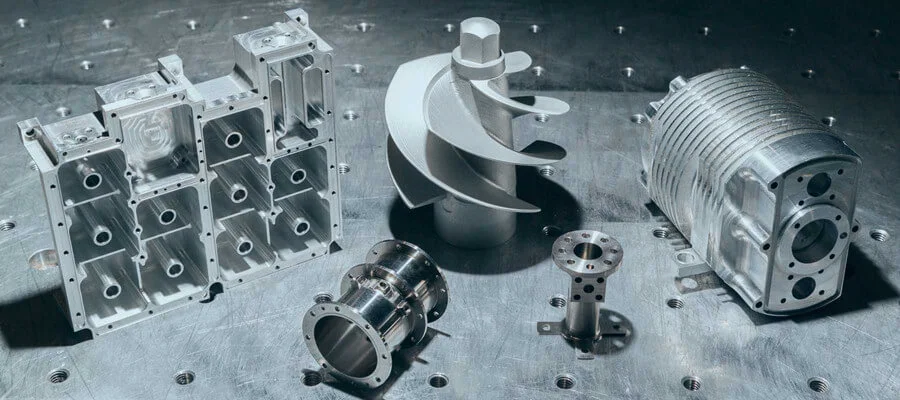
Nevertheless, as with many other manufacturing considerations, your choice will depend on some factors. One of the major factors to consider is the intended application of the final product. Other factors to consider include budget and manufacturing conditions.
6061 aluminum alloy is versatile, making it fit for multiple structural applications. Therefore, it will be the ideal choice when the process requires plenty of machining, welding, or forming.
If corrosion is a concern, as seen with outdoor applications, 6061 aluminum is also the better option among the two. Furthermore, extruding complex shapes from aluminum will be better done with 6061, especially when you have a limited budget.
On the other hand, the major characteristic of aluminum 7075 is its increaaed strength. Therefore, it would be the better choice when you need an option with very high tensile strength. This accompanies high wear resistance and high strength-to-weight ratio.
It is also the better option when you have to expose the component to heat or when there is plenty of friction involved. If cost isn’t much of a concern for you, then you should choose the 7075 alloy.
FAQ
Is 7075 aluminum stronger than steel?
7075 aluminum boasts higher strength than many other alloys available. It is comparable to several steel grades. This alloy can even be considered stronger than some grades of steel.
For example, the ultimate tensile strength of 7075 aluminum is 503 MPa while that of structural steel is 420 MPa. However, some other steel grades may have their tensile strengths reaching over 1000 MPa.
Is 6061 or 7075 aluminum stronger?
7075 aluminum is stronger than the 6061. 6061 aluminum has a yield strength of 276 MPa (40000 psi) while 7075 has a yield strength of 503 MPa (73000 psi).
The 7075 alloy has an improved strength-to-weight ratio compared to 6061. Thus, 7075 aluminum is largely preferred in the aerospace industry, transportation industry, and marine industry. It is ideal in any industry that prefers increased strength and lightweight properties.
Is 6061-T6 weldable?
Ease of welding describes the ability to weld and relatively free from weld cracking. 6061-T6 aluminum can be welded successfully with at least four different filler alloys or more. It is much more weldable than most of the other aluminum alloys.
What is the price difference between 6061 and 7075 aluminum?
Aluminum 7075 often costs higher than 6061 aluminum. The price difference is often up to 25% on the average.
Conclusion
Material choice is a very crucial part of product development. This 6061 vs. 7075 aluminum alloy comparison examined various parameters including properties, specific features, and unique applications.
The details here will help you select the best option for your project. Many times, professional help will help you choose the right material. Contact AT Machining today for you machining needs!


